Zhanhuan Shang
A UAV-Enabled Time-Sensitive Data Collection Scheme for Grassland Monitoring Edge Networks
Jul 30, 2024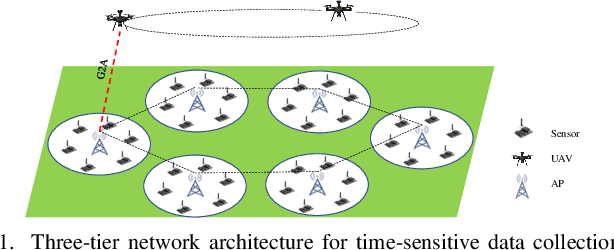
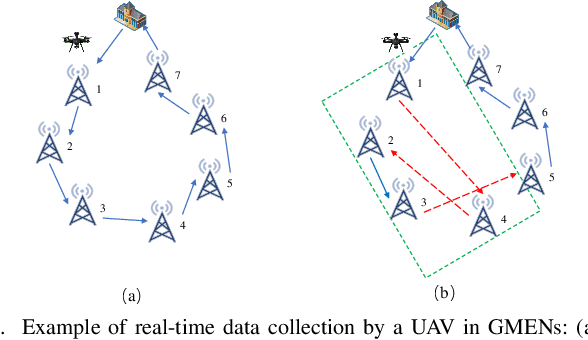
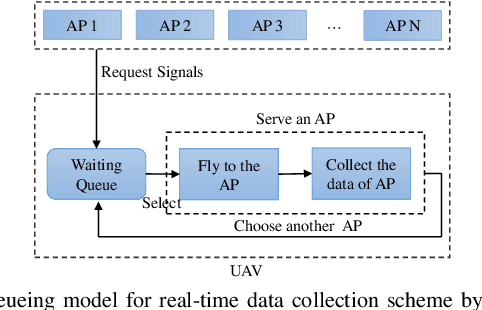
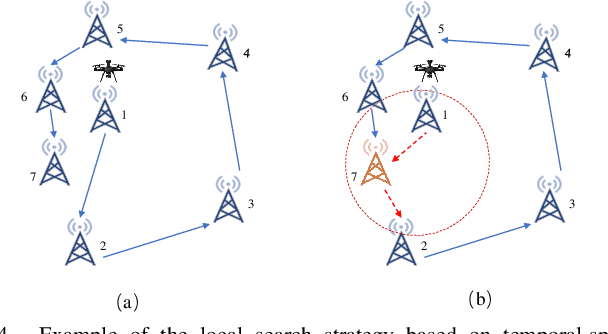
Abstract:Grassland monitoring is essential for the sustainable development of grassland resources. Traditional Internet of Things (IoT) devices generate critical ecological data, making data loss unacceptable, but the harsh environment complicates data collection. Unmanned Aerial Vehicle (UAV) and mobile edge computing (MEC) offer efficient data collection solutions, enhancing performance on resource-limited mobile devices. In this context, this paper is the first to investigate a UAV-enabled time-sensitive data collection problem (TSDCMP) within grassland monitoring edge networks (GMENs). Unlike many existing data collection scenarios, this problem has three key challenges. First, the total amount of data collected depends significantly on the data collection duration and arrival time of UAV at each access point (AP). Second, the volume of data at different APs varies among regions due to differences in monitoring objects and vegetation coverage. Third, the service requests time and locations from APs are often not adjacent topologically. To address these issues, We formulate the TSDCMP for UAV-enabled GMENs as a mixed-integer programming model in a single trip. This model considers constraints such as the limited energy of UAV, the coupled routing and time scheduling, and the state of APs and UAV arrival time. Subsequently, we propose a novel cooperative heuristic algorithm based on temporal-spatial correlations (CHTSC) that integrates a modified dynamic programming (MDP) into an iterated local search to solve the TSDCMP for UAV-enabled GMENs. This approach fully takes into account the temporal and spatial relationships between consecutive service requests from APs. Systematic simulation studies demonstrate that the mixed-integer programming model effectively represents the TSDCMP within UAV-enabled GMENs.
Near-Optimal Trajectory Design and Restoration Areas Allocation for UAV-Enabled Grassland Restoration
Apr 10, 2022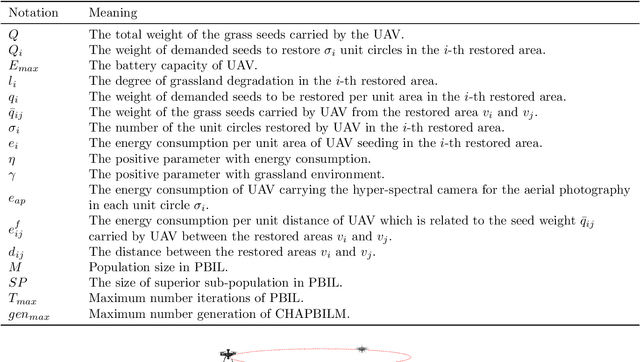
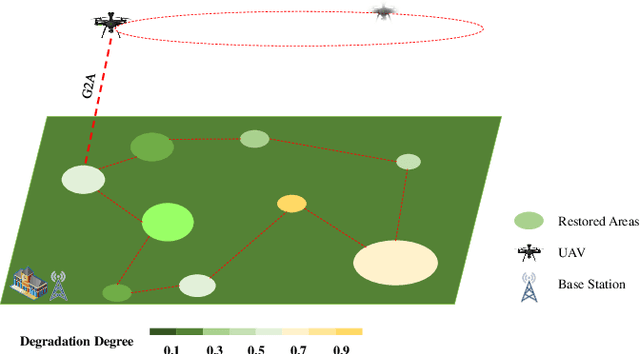
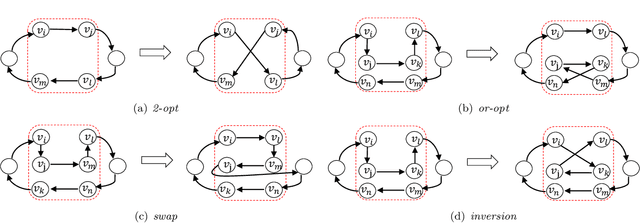

Abstract:Grassland restoration is a critical means to safeguard grassland ecological degradation. This work considers the maximization restoration areas problem for UAV-enabled grassland restoration method in a restoration process, which is a precise restoration scheme. We first formulate the problem as a multivariable combinatorial optimization problem. By analyzing the characteristics of the optimization problem, it can be decomposed into the two stages: UAV trajectory design and restoration areas allocation. On this basis, the problem can be regarded as a composite problem of traveling salesman problem (TSP) and multidimensional knapsack problem (MKP). Unlike the single combinatorial optimization problem, the coupling relationship between them makes the problem difficult to directly solve by employing the single stage traditional methods. To effectively solve without ignoring the dependence between the two stages, we develop a cooperative optimization algorithm based on heuristic algorithm and population-based incremental learning (PBIL) incorporated with a maximum-residual-energy-based local search (MRELS) strategy, called CHAPBILM, to deal with this problem under constraint conditions of the UAV energy, the total seeds weight, and the number of restored areas. The simulation studies demonstrate that the proposed cooperative optimization method is effective for UAV-enabled grassland restoration problem and can significantly outperform the noncooperative optimization methods, which also verifies the dependency relationship between UAV trajectory design and restoration areas allocation.
 Add to Chrome
Add to Chrome Add to Firefox
Add to Firefox Add to Edge
Add to Edge